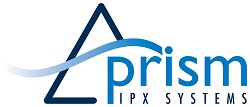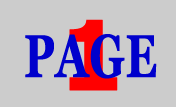Nokia to Cut 10,000 Jobs and Close 3 Facilities By KEVIN J. O’BRIEN
The New York Times
Published: June 14, 2012
BERLIN — Nokia said Thursday it would slash 10,000 jobs, or 19 percent of its work force, by the end of 2013 as part of an emergency overhaul that includes closing research centers and a factory in Germany, Canada and Finland, and the departures of three senior executives. The company also warned investors that its loss was likely to be greater in the second quarter, which ends June 30, than it was in the first, and that the negative effects of its transition to a Windows-based smartphone business would continue into the third quarter. Nokia, based in Espoo, Finland, posted a loss of €929 million, or $1.2 billion, in the first quarter as sales plummeted 29 percent. Once the undisputed global leader in the mobile phone business, Nokia has been out-competed by Apple , as well as by Samsung and other makers of handsets running Google’s Android operating system. In February 2011, Nokia and Microsoft announced an alliance to produce a line of smartphones called Lumia running the Windows operating system. Since then, the Finnish company has seen its sales fall and profit evaporate as consumers and operators have avoided, or demanded discounts on, smartphones running Nokia’s in-house Symbian operating system, which the company is phasing out. Although Lumia devices have won critical praise, sales have not been strong enough to offset declines in its main business. “These planned reductions are a difficult consequence of the intended actions we believe we must take to ensure Nokia’s long-term competitive strength,” said Stephen Elop, the Nokia chief executive and a former Microsoft executive. “We do not make plans that may impact our employees lightly, and as a company we will work tirelessly to ensure that those at risk are offered the support, options and advice necessary to find new opportunities.” The company said the job reductions, and the shutdowns of research and development centers in Ulm, Germany, and Burnaby, Canada, and a handset factory in Salo, Finland, would save €1.6 billion by the end of next year. As part of its streamlining, Nokia announced the sale of its luxury handset business, Vertu, to EQT VI, a European private equity firm, for an undisclosed price. The company also said it had purchased Scalado, a maker of smartphone imaging technology that is based in Lund, Sweden. It did not say what it paid for Scalado. Further, Nokia said it would “closely assess the future of certain non-core assets.” In a conference call with journalists, Mr. Elop suggested that Nokia Siemens Networks, the company’s 50-50 network equipment venture with Germany’s Siemens, which lost a combined €986 million in 2010 and 2011, could be one of the businesses in the focus of its future review. Mr. Elop declined to describe Nokia Siemens as a non-core asset but said the network gear maker’s restructuring, now in its second year, was designed to make it more attractive for potential investors. “What we have said is that Nokia Siemens is going through its own restructuring and we are pleased with the efforts so far,” Mr. Elop said. All the restructuring is being done to make it “a more independent entity in future,” he added. “As that proceeds, we will make a determination to see what the future holds.” Nokia said 3,700 of the planned 10,000 job to be cut would take place in Finland. The handset factory in Salo to be closed is Nokia’s largest in the country, and about 850 employees will be affected there by the reductions. Nokia plans to keep a research center in Salo open. Pete Cunningham, an analyst at Canalys, a research firm in Reading, England, said the cuts by Nokia were not surprising given the intense competition from Apple, the global leader in smartphones, and Samsung, the South Korean rival that overtook Nokia this year as the world’s largest bulk maker of cellphones. “It is an unfortunate but necessary action to streamline the business to ensure that it has the best chance of competing,” Mr. Cunningham said. “Apple and Samsung are really turning the thumbscrews on the rest of the market. Nokia is having to work very hard to make its Lumia handsets attractive due to the lack of traction that Windows Phone has in the market today.” Shares of Nokia were down 9.4 percent Thursday in Helsinki trading. Nokia employed 53,553 workers in its handset business at the end of March. The company also had 68,595 employees in Nokia Siemens. The Nokia executive responsible for Nokia’s bulk handset business, Mary T. McDowell is one of three senior level executives who will be leaving the company at the end of this month, Nokia said. Jerri DeVard, the chief marketing officer, and Niklas Savander, the executive vice president of markets, will also leave. Ms. McDowell, an American and a former Hewlett-Packard executive, had been with Nokia since 2004. Ms. DeVard, an American who had worked in marketing at Verizon, Citigroup and Revlon, had joined Nokia in January 2011. Mr. Savander, a Finn, had served in a variety of senior roles since joining Nokia in 1997. Nokia promoted three Finnish citizens and two Americans as replacements. Juha Putkiranta was named executive vice president of operations; Timo Toikkanen was appointed executive vice president of mobile phones; Chris Weber, an American, was named executive vice president of sales and marketing; Tuula Rytila was appointed as senior vice president of marketing and chief marketing officer; and Susan Sheehan, an American and former Microsoft executive, was named senior vice president of communications. Ilkka Rauvola, an analyst at Danske Bank in Helsinki, said that while the profit warning might hurt shares in the short term, Nokia appeared to be addressing its core challenges for the long term. “It looks to me that management is taking action and doing what they need to do,” Mr. Rauvola said. Mr. Elop, the Nokia chief, said the cost savings and job cuts were intended to return Nokia to profitability “as soon as possible.” He said Nokia, which reported net cash reserves of €4.9 billion at the end of March, had “ample” resources to weather the transition. But Francisco Jeronimo, an analyst with International Data in London, said Nokia was running out of time to return to profitability and prove the success of its strategy to align its business with Microsoft, the world’s largest maker of software. “They have been announcing job cuts almost every quarter,” Mr. Jeronimo said. In the year through March, Nokia had cut 11,169 jobs, or 17 percent of its work force. “They need to tell the market when they plan to return to profitability, or else they will become a takeover target themselves by the end of this year.” Mr. Jeronimo said Microsoft would be the most likely suitor for Nokia, whose share price has fallen by 75 percent since the company announced its Windows strategy last year. “The integration of software and hardware is key to Apple’s success and the reason why Google has bought Motorola’s handset business,” Mr. Jeronimo said. “Microsoft would benefit most from the acquisition.” Both companies have declined to comment on market rumors about a pending takeover. In the conference call, Mr. Elop described Nokia’s relationship with Microsoft as fruitful and close, saying that both companies expected a boost from the upcoming introduction of the Windows 8 operating system, which will have enhanced mobile features and allow for the integration of services across smartphones, tablet computers and other computing devices. A major question is whether Nokia on its own can bridge the transition to a Windows-based future. Nokia told investors that it expected its second-quarter operating loss in its devices and services segment, its main business, to be greater than the 3 percent of sales recorded in the first quarter. The company had previously said the second-quarter loss could be equal or more than the loss in the first quarter. “With these planned actions, we believe our devices and services business has a clear path to profitability,” said Timo Ihamuotila, the Nokia chief financial officer, said. “Nokia intends to maintain its strong financial position while proceeding aggressively with actions aimed at creating shareholder value.” | 











 You are cordially invited to attend the:
You are cordially invited to attend the:  Stockholm the capital of Sweden is known for its beauty, its buildings, its architecture, its clean and open water, its many parks, as well as being a cultural, political, and media hub. The Elite Hotel Marina Tower is just minutes from Stockholm’s city centre, in one of the most beautiful locations. The hotel has views of the inner islands of Stockholm’s famous archipelago, over 24,000 islands, as well as Old Town.
Stockholm the capital of Sweden is known for its beauty, its buildings, its architecture, its clean and open water, its many parks, as well as being a cultural, political, and media hub. The Elite Hotel Marina Tower is just minutes from Stockholm’s city centre, in one of the most beautiful locations. The hotel has views of the inner islands of Stockholm’s famous archipelago, over 24,000 islands, as well as Old Town. 


 PAGERS & Telemetry Devices
PAGERS & Telemetry Devices 










































 David George and Bill Noyes
David George and Bill Noyes






